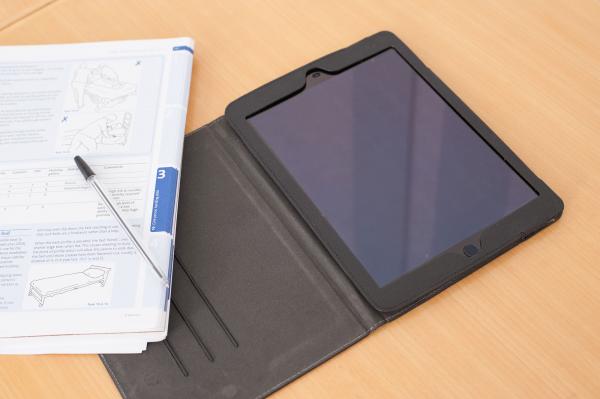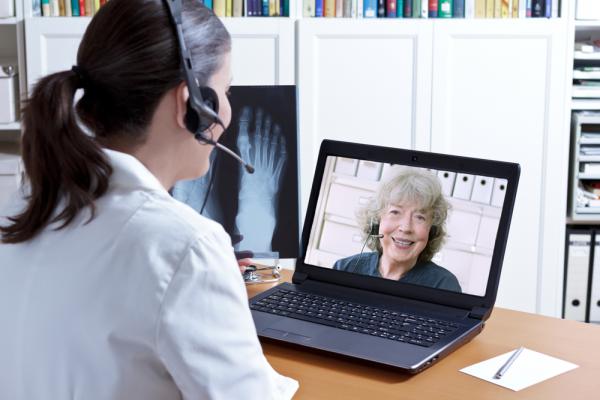With many organisations using virtual learning to deliver educational experiences, is virtual becoming the new reality?

What is a virtual learning environment and what is virtual learning?
Virtual learning environments are systems designed for education and teaching that use the internet and/or specialised software. Virtual learning is the delivery and experience of these services.
Virtual learning is used for a broad range of purposes, from delivery of educational lectures, webinars and skills courses to student placements. As a result, many organisations are using virtual learning to deliver educational experiences. There are challenges to supplying content online but, with perseverance, online learning can deliver many benefits.
Asynchronous and synchronous learning
Virtual learning environments have evolved to ensure the interactive elements of in-person learning are still present, using a combination of live (synchronous) or pre-recorded (asynchronous) techniques. Both teaching methods are becoming more popular as professionals increasingly look for digital solutions to solve everyday challenges.
Asynchronous learning
Asynchronous learning is commonly delivered via pre-recorded PowerPoint presentations and vlogs, plus online forums and discussion boards. This type of learning offers a more learner-centred approach, as the delivery provides flexibility. Learners can choose when to access information and have the opportunity to pause recordings.
What makes a good asynchronous lecture?
- A busy online blog that encourages further understanding and allows learners to ask any questions they may have.
- Links to other resources to promote further understanding.
- An easy-to-access, intuitive design.
- A post-event survey to gather feedback.
Synchronous learning
Synchronous learning takes place in real time and this can be done via webinars, instant messaging and virtual classrooms. It enables the speaker and learner to interact with one another and go through the content together. This type of delivery is typically more engaging as it provides learners with the opportunity to ask questions and receive immediate feedback.
What makes a good synchronous lecture?
- Content-related questions, polls and chats to make the session as engaging as possible.
- Time for short breaks so learners can move about and refocus.
- Links to downloadable reference documents.
- Links to other relevant resources.
- A post-event survey to gather feedback.
Training courses and lectures
The primary aim of providing an online learning experience is to maintain face-to-face delivery and to further knowledge through interactive learning. Live webinars and forums are often blended with PDFs, presentations and videos.

Online lectures
Frequently used by universities to support students, synchronous and asynchronous lectures are commonly used to deliver modules. Sites such as Eventbrite or Panopto offer external webinars aimed at wider audiences.
On-call training
Some hospitals have now made their in-service on-call training digitally accessible. Using videoconference calls and case studies, physiotherapists gain the skills they need to manage urgent or emergency cases with only indirect supervision.
Practical training courses
As a supplement to face-to-face teaching, a few courses have now made it possible to learn techniques remotely as part of a qualification. The necessary equipment is delivered to the participant’s home and they ask friends or family to volunteer as practice patients. Pre-recorded videos offer instruction and guidance on how to perform tasks, while cameras and two-way live feeds are used to assess the participant’s technique during assessments.
Physiotherapy UK 2020
An international first in the physiotherapy profession, the leaders behind Physiotherapy UK commissioned a virtual world to be created for therapists to present, discuss and engage with physiotherapists across the UK. Using a basic digital home set-up and personalised avatars, participants could move between virtual lecture theatres, conference rooms, and recreational environments, to attend talks and network with other clinicians.
What are the challenges, solutions and opportunities of virtual training courses and lectures?
Challenges
- Availability of software and hardware.
- Internet connectivity.
- Cost of set-up.
- Security of data and software.
- Engagement of professionals, especially digital sceptics.
- Different levels of digital literacy
- Unable to provide robust practical feedback.
- Ensuring people are aware of the courses and lectures, and encouraging them to join.
Solutions
- Make sure the hardware or software needed is freely available.
- Allow access from alternative spaces such as libraries or check points.
- Ensure systems are easy to use and interactive.
- Make courses and lectures beneficial to learners.
- Use familiar formats or common software so learners don’t need extra training to participate.
Opportunities
- Flexible learning.
- Reduced service delivery cost (in some situations) as there are no venue hire costs or travel expenses.
- Sharing knowledge with like-minded people across a wider geographical area.
- Acquiring new skills.
- Lectures or events are often recorded so learners can return to the information and reply segments.
- Software that enables adaptations to audio and display size, plus the option to learn at a different pace, mean they're more accessible to students with learning difficulties or disabilities.
Virtual and Technology Enabled Care Service (TECS) student placements
Like traditional clinical placements, virtual and Technology Enabled Care Service (TECS) placements aim to help students develop their skills within a practice setting. They encourage autonomy and provide the opportunity for students to apply what they have learned.
However, unlike clinical placements, students use technology to engage with educators, organisations and patients, often completing the placement from home.
These placements can be:
- TECS placements (also known as telehealth)
- simulated placements
- policy or leadership placements
- research placements.

Why deliver placements this way?
In 2019 the NHS released their Long Term Plan, which highlighted the need to increase the use of digital-enabled care within healthcare systems. A growing number of physiotherapy services are being offered to patients in a ‘remote first’ format and some patients are already being supported digitally to manage long-term conditions and musculoskeletal disorders.
Although digital-enabled care can improve services and make them more sustainable, it has the potential to create a skills gap in the workforce. Offering these placements to students during their training means they can develop the skills they need to manage remote patient care platforms. This benefits both patients and physiotherapy teams.
There is an increasing need for physiotherapy placement places, both to meet the demands of a growing profession and an expanding UK population. These types of placements offer part of the solution.
Many TECS placements take place in an environment that wasn’t previously accessible to students or where multiple students couldn't take part, and so they increase placement capacity. Virtual placements have been covered in a number of practice-based learning case studies.
What are the challenges, solutions and opportunities of TECS and virtual placements?
Challenges
- Availability of software and hardware.
- Internet connectivity.
- Security of data and software.
- Student engagement.
- Environment and safety (a private and comfortable home-working set-up is essential).
Solutions
- Universities can open offices or designate library space for students to complete placements.
- Use evidenced software to ensure data safety and good user experience.
- Normalise different placement types.
Opportunities
- Potential to increase placement capacity.
- Opportunity for students to enter different sectors of physiotherapy that weren’t accessible previously.
- Enables flexible learning.
- Develops the skills needed to deliver digital services.
- Can reduce travel and expenses for students.
Further resources and information
- Upcoming CSP Eventbrite webinars
- RCSLT telehealth placement information
- HEE placement innovation
- Scottish Government dNMAHP network
Authors:
- Ani Stoker
- Sam Wynne



































